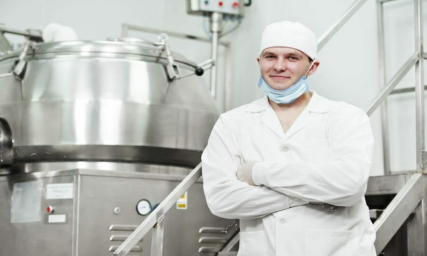How to get QA buy-in to clean room turn down
Clean room turn down is a growing discussion in the Pharma industry and is usually reflected in corporate policy; if you google ‘sustainability’ and a top ten pharma company name, you’ll find taglines like GSK’s “Our Planet – Our Responsibility”.
Sixty-five of the top 100 listed companies in Australia are reporting their sustainability credentials in their year-end reporting. The Australian government is considering legislation to make this reporting mandatory and for international subsidiaries with Australian operations to identify their local sins. The aim of this approach is to encourage organisations to reduce their energy consumption and carbon footprint.
However, why would your Quality Assurance (QA) department buy in to changing validated states, potentially increasing the risk of higher contamination in critical GMP areas, based on cost-saving and environmental considerations as justification for change?
What are the cleanroom turn down options?
- Turn down is not all or nothing.
- There are three cleanroom turn down scenarios to consider when looking at this topic:
Scenario 1 | Cleanroom turndown option
- Temporary turndown of cleanroom utilities during rest periods.
- This process maintains a reduced positive pressure in the room and surrounding areas, and room pressure is maintained.
Scenario 2 | Cleanroom turn down option
- Temporary turn off of utilities during rest periods.
- This process results in the loss of positive pressure from the room and will permit “blowback” from the adjacent areas.
- Some additional factors to consider are loss of temperature and humidity control, room seal effectiveness and activity taking place during the downtime.
Scenario 3 | Cleanroom turn down option
- Permanent cleanroom turndown of utilities during rest and operation.
- This process is the most involved as it will require validation of the manufacturing and rest conditions, however, once the new state is validated to the hygiene Grade or ISO Class it is likely to result in significant energy savings.
- Trialing the above scenarios will require a cleaning assessment prior to resuming current manufacturing operations.
Good science and Sustainability in Pharmaceutical GMP Manufacturing | Cleanrooms
The ‘devil is in the detail’ and the detail is good science.
In support of cleanroom turn down as a viable energy-saving strategy, with minimal impact on the recovery to the qualified state, are:
- a recent study performed by PharmOut, “What’s your cleanroom really costing you?” (read more here), and
- an article published by the ISPE (January/February 2014, Vol. 34, No.1) ‘Evaluation of Controlled Manufacturing Environments following an Air Handling Unit Shutdown’.
What do the standards say about cleanroom maintenance?
A structured approach to cleanroom maintenance can be reached by applying relevant standards and industry experience.
Clean room standards and guidelines provide information on the design, classification and control of clean rooms and the acceptable levels of contamination for each of the cleanroom classifications, Grade A – D / ISO Class 1-9. Relevant standards include:
- Guide to Good Manufacturing Practice for Medicinal Products, Annex 1,
- ISO 14644, Cleanrooms and Associated Controlled Environments
- BS 8568, Cleanroom Energy Standard
- FDA Guidance for Industry Sterile Drug Products Produced by Aseptic Processing (formally the FDA Aseptic Process Guidelines)
The standards are useful, but do not offer a GMP support framework to sell these cleanroom turndown concepts to QA.
How can QA’s confidence be increased?
It is easier to gain support to develop a new cleanroom using the latest energy-saving innovations than to make the same changes to an existing cleanroom because of the downtime, effort and capital expenses associated with re-validation.
Successful validation is still at the core of any cleanroom change which means your organisations Quality Management System (QMS) is the key to introducing cleanroom turndown practices.
GMP is not anti-change. Scientific judgement should determine what additional testing and validation studies are appropriate to justify a change in a validated process.
PIC/S Part I (PE 009-14), Chapter 1 ‘Quality Risk Management’, Section 1.12 states:
“The quality risk management system should ensure that: The evaluation of the risk to quality is based on scientific knowledge, experience with the process and ultimately links to the protection of the patient.”
After applying good risk management practices as per ICH Q9: Quality Risk Management, and a science based approach to change including temporarily increased quality monitoring, QA will gain confidence that energy saving innovative changes can be made without impacting the product and regulators should be satisfied that the requirements have been verifiably met.
Experience is the key
A wealth of information supporting cleanroom turndown changes may already exist from data collected through your Environmental Monitoring Program/Software, periodic quality reviews, Corrective and Preventative Actions (CAPA) and deviations records.
Combine this information with validation and manufacturing experience and change may not be as difficult as you think:
- How many unplanned air quality events have you had in the past year?
- How has it impacted the cleanroom classification?
- How did it impact the product?
- How was it dealt with and documented?
- Did QA accept the science?
Reducing fan speeds, weekend/shutdown turndowns (non-sterile) and reduced lighting requirements do not remove or reduce the monitoring aspect of cleanroom hygiene. You can still monitor as vigorously as you do for ‘normal’ operation in the long term and be still confident of meeting Guide to Good Manufacturing Practice for Medicinal Products, Annex 1 Section 8 – 25.
Remember:
- Turndown isn’t ‘all or nothing’- there are various options available to you.
- QA buy-in will be driven by your existing QMS procedures and good science to ‘sell’ turndown.
If you’re wanting to design a cleanroom or need GMP assistance, CAPA training, validation and/or self-inspection consultancy for your GMP operations, please contact PharmOut’s leading GMP consultants and GMP training professionals.


